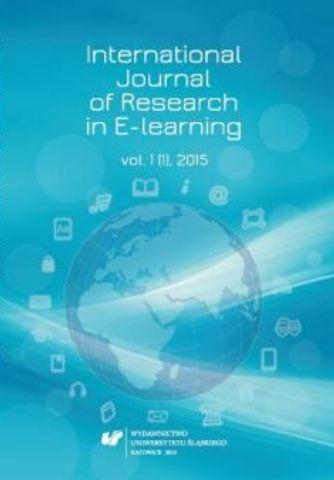Academic Ranking of World Universities (2015). Accessed 24 August 2015. Retrieved from http:// www.shanghairanking.com/ru/ARWU2014.html.
Google Scholar
Bibliometrics of Ukrainian Science: Project. Accessed 24 August 2015. Retrieved from http://www. nbuviap.gov.ua/bpnu/index.php?page_sites=pro_proect.
Google Scholar
Conception of development of BGKU. Accessed 24 August 2015. Retrieved from http://kubg.edu. ua/resursi/dokumenti.htmL
Google Scholar
E-portfolio of BGKU. Retrieved from http://e-portfolio.kubg.edu.ua/. Accessed 24 August 2015.
Google Scholar
Kabakova, E. A. (2015). Webometrics rating as a tool for the evaluation of universities. Questions of territorial development,22 (2), pp. 1-16. Accessed 24 August 2015. Retrieved fromhttp:// cyberleninka.ru/article/n/vebometricheskiy-reyting-kak-instrument-otsenki-deyatelnosti-vuzov.
Google Scholar
Karpenko, O. M. (2014). The international ranking of universities Webometrics: The dynamics of the network activity of Russian universities. In F. E. Sheregi, & A.L. Arefeva (Eds.),Measurement of ratings of universities: International and Russian experience(pp. 66-82). Ministry of Education and Science. Moscow: Center for Sociological Research.
Google Scholar
Morze, N. V, Buinytska, O. P., Kocharyan, A. B. (2015). Competency-oriented education: Quality assurance. In Ogneviuk, V. O., Khoruzhaya, L. L., et al. (Eds.), IC-competence of teachers and students as a way to formation of information educational environment of the university (pp. 151-196). Section II. Collective monograph. Kyiv: Borys Grinchenko Kyiv University.
Google Scholar
Morze, N. V., Varchenko-Trotsenko, L. O. (2014). Electronic portfolio as a tool for measuring the performance of a teacher of modern universities. Information sciences and technology in education (53),36-41.
Google Scholar
Ogneviuk, V. A., Zhyltsov, O. B., Karaman, S. O., et al. (2014). I’m a student: Quidance. Section V Creation of a smart university is our strategic objectives(pp. 143-213). In Ogneviuk, V.A. (Eds.), 4th edition with changes. Kyiv: Borys Grinchenko Kyiv University.
Google Scholar
QS World University Rankings® 2014/15. Accessed 24 August 2015. Retrieved from http://www. topuniversities.com/universities/region/140/country/207.
Google Scholar
Ranking Web of Universities. Accessed 24 August 2015. Retrieved from http://www.webometrics. info.
Google Scholar
Rating of higher educational institutions of Ukraine. Accessed 24 August 2015. Retrieved from http:// jsi.net.ua/scopus/ratings_uni/index.html.
Google Scholar
Rozhen, A. (1999). Tell the citation index of your articles, and I’ll tell you what kind of scientist you are. Mirror of a week,266 (45).
Google Scholar
Tretyakova, O. V. (2014). The possibility of using Webometrics analysis in the evaluation of the website of the Research Institute. Questions of territorial development,12(3). Accessed 24 August 2015. Retrieved from http://goo.gl/x0zt8k.
Google Scholar
What is meant by the assessment of the quality of educational services? Accessed 24 August 2015. Retrieved from http://www.euroosvita.net/?category=21&id=229.
Google Scholar
Zakharchenko, V. N., Kalashnikova, S. A., Lugovyi, V. I., & Kremen, V. G. (Eds.). (2014). National Education Glossary: higher education.2nd edition. Kyiv: LLC Pleiades Publishing House.
Google Scholar
Zimenkovsky, B. S. (Eds.). (2010). Methodology and ranking multidisciplinary principles of structural units LNMU named Danylo Halytsky: guidelines.Lvov.
Google Scholar


